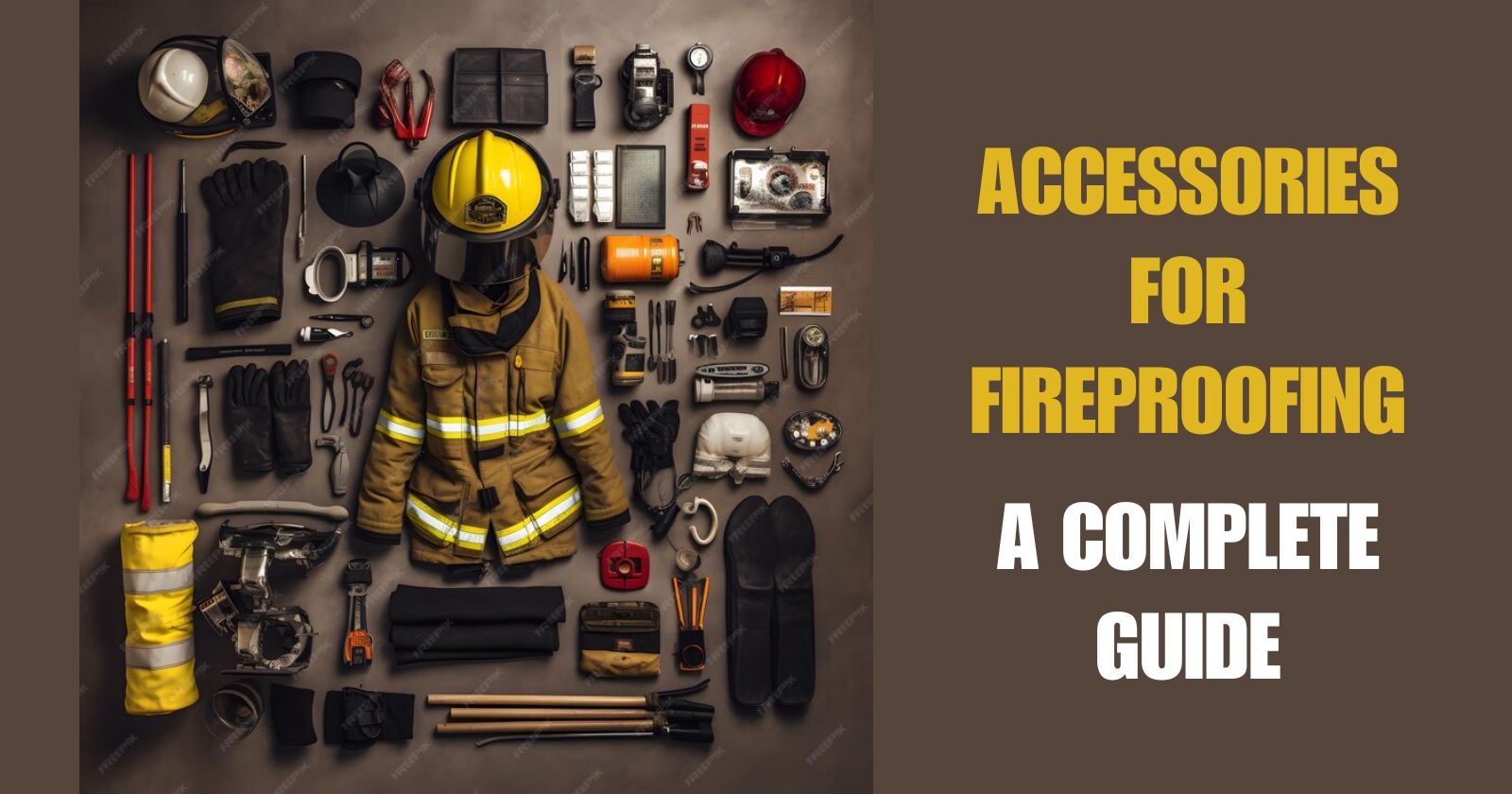Fireproofing accessories are one of the best ways to increase fire safety within industrial settings since they reduce the likelihood of fire-related events.
The focus of today’s post is fireproofing accessories , including their varieties, applications, and—above all—the advantages they offer in industrial environments.
Types of Fireproofing Accessories
The way that fireproof paints and coatings function is by forming a barrier that is resistant to the intense heat of a fire, keeping it from getting to the underlying structure and causing damage.
Whenever subjected to heat, these protective coatings effectively cool down and shield the surface they cover by expanding and releasing water.
Important industrial infrastructure, such as storage tanks, pipes, and structural supports, is protected by fireproof coatings.
Applying fireproofing material with specialist sprayers is crucial. Enhanced efficiency throughout the fireproofing process, which produces a more dependable and durable fireproof barrier, is one of the main benefits of using these specialty sprayers.
For industrial buildings, fireproofing insulation materials like intumescent wraps, blankets, and planks are essential.
They expand in the presence of high temperatures, forming a barrier that shields the supporting framework.
By lowering heat transfer, fireproof insulating materials improve the structure’s resistance to fire and provide a dual benefit in terms of energy efficiency.
There are a useful addition in industrial settings because of their dual use.
Applications and Techniques for Fireproofing:
Fire Retardant Building Components
Concrete and steel are guaranteed to be intact by fireproofing accessories. Fireproof coatings and insulating materials, whether used on columns, beams, or floors, stop structural failure in the case of a fire.
Fireproofing is an essential safety measure in high-rise structures, manufacturing plants, & storage facilities that can mean the distinction between structural integrity & collapse following a fire.
Electrical Component Fire Safety
Electrical systems are particularly vulnerable to harm in the event of a fire in industrial settings.
Preventing short circuits, preserving circuit integrity, and lowering the possibility of electrically generated fires are the basic goals of fireproofing electrical components.
In this industry, fireproofing strategies include:
- fire-resistant cable coatings
- fire-resistant electrical panel coatings
- Use of intumescent compounds to safeguard delicate electrical equipment
Compliance with Safety and Regulatory Needs
Numerous safety rules and guidelines apply to industrial settings, and many of them require the installation of fireproofing equipment.
Maintaining the lifespan of industrial infrastructure and worker safety requires adherence to these laws.
Fulfilling Safety Requirements
Using fireproofing accessories in accordance with safety regulations is a proactive approach to reduce the risk of disasters.
Industrial establishments can enhance the safety of their personnel and property by making investments in fire safety.
Liability and Insurance-Related Issues
Establishments that put fire safety first by using fireproofing accessories can have an easier time getting full insurance coverage at a better price. Following safety guidelines and using fireproof materials can also affect how insurance claims are handled in the case of a fire.
Economy of Cost and Long-Term Savings
Benefits over the Long Term vs. Initial Investment
The long-term advantages of fireproofing accessories transcend any early costs, despite the somewhat high initial outlay. Industrial buildings that have been fireproofed last longer and are less likely to experience fire-related incidents.
Lowering the Chance of Damage From Fire
With the application of fireproofing accessories, factories can mitigate the risk of fire-related harm and maintain uninterrupted operations, hence yielding long-term cost savings and increased productivity.
Reductions in Insurance Premiums
Businesses can save money on insurance premiums by exhibiting a dedication to fire safety in their industrial facilities, which makes fireproofing a wise move.
Upkeep and Examine
Due to weathering and regular wear and tear, coatings, insulating materials, and additional fireproofing components might deteriorate over time.
Frequent maintenance and inspections may find and fix any problems, ensuring that the fireproofing stays in top shape.
To evaluate the state of fireproofing accessories and confirm the quality of fireproof finishes, materials for insulation, and other fireproofing components, industrial facilities should set up a thorough inspection methodology.
In addition to providing structural protection and ensuring safety, the application of fireproofing accessories & components also saves money on insurance.
Industrial establishments protect their infrastructure, assets, and most crucially, the safety of their workers, through investing in fireproofing accessories.
Accessories for fire safety are more than just goods; they are assurances of durability and security.
Please contact our staff about the fireproofing accessories if you found this information to be helpful. We are eager to assist you!
Thermal barriers, firestop systems, sealants, and fire-resistant coatings are examples of accessories for fireproofing.
Why Is It Crucial to be Fireproof?
Having said that, fireproofing reduces the possibility of heat and flames damaging the property while also giving the occupants more time to flee.
Furthermore, proofing offers a secure entry for firemen to carry out rescue operations in addition to keeping the people within the fires safe.
What Uses Does Fireproofing Serve?
Fireproofing Chemicals of Steel, Concrete, and Timber Spray-applied fireproofing, also known as sprayed fire-resistant material (SFRM), is used as a passive fireproofing method for buildings.
SFRM is a spray-applied fireproofing material for steel beams and columns that is based on cement or mineral fibres, such as gypsum.

